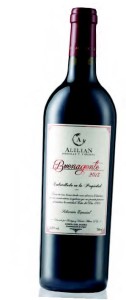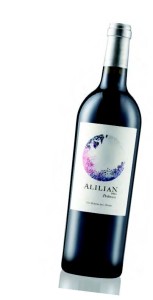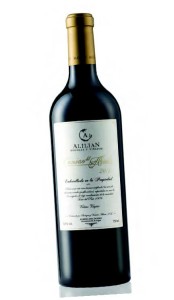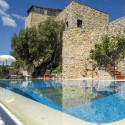By AJ Linn
All Spanish wine regions have almost routinely been through the same development phases over the past 50 years. In the beginning local farmers made wine for their own consumption, and then neighbours asked if they could buy some so they would also be able to enjoy it. If the wine was any good (most of it wasn’t back then owing to lack of knowledge about the basic tenets of winemaking) people from outside the area started to arrive looking for the product, until slowly a wine would gather notoriety on a wider geographical base. Remember at this stage it was sold direct from the barrel, and customers had to bring their own take-away containers of glass or plastic.
Eventually a level of popular acceptance would be reached, obliging the farmer to make a crucial decision. Should he start bottling the wine and sell it at a higher price, or should he merely continue as he always had, and never expect to get rich from it? Assuming he went the bottling route, it is likely he would plant more vines on his land and give up milking cows. If he was lucky, his wine or wines became recognised and he and his family never had to worry about money again. Unlikely though, as everyone knows that to make money from wine you have to be very lucky indeed. There are currently nearly 30,000 different Spanish wines on sale, so the competition is intense.
 As each region gains in reputation and market share, so the big winemakers from other areas start arriving, and for the farmer-turned-winemaker the real jackpot comes when someone rings his doorbell and announces he is interested in buying the business. Then it’s cashing-in time, and the lucky ex-farmer can stop worrying about whether it will be raining at harvest time and start worrying about the taxman.
As each region gains in reputation and market share, so the big winemakers from other areas start arriving, and for the farmer-turned-winemaker the real jackpot comes when someone rings his doorbell and announces he is interested in buying the business. Then it’s cashing-in time, and the lucky ex-farmer can stop worrying about whether it will be raining at harvest time and start worrying about the taxman.
It has happened everywhere from Rioja to Ribera del Duero, and from Toro to Rías Baíxas/Albariño. Buying a bodega that already has its brands firmly established in the market is the best option, but also the most expensive, and neither totally risk-free. A change of winemaker or a run of bad vintages can undo all the good built up over decades. Perhaps better and more cost-effective to buy vineyards.
This is the route that Xu Liang and winemaker Cote García Díez decided on once their decision to set up a new winery in Ribera del Duero had been taken. Cote, from Ribera’s Peñafiel, had already enjoyed success in other wineries in the region, and Xu Liang, son of Shu Ping Xu, long-established in Spain in the restaurant business (La Dehesa Group, Madrid) and distributor of French and Spanish quality wines in China, were confident that they could achieve what many people fail at – establish a new wine brand.
In China it has always been the big French names that have pushed prices to unimaginable levels, usually in the Hong Kong wine auctions, so it could even be considered a rash decision to attempt to establish a market for an unknown Spanish wine in such a difficult environment. But backed by the assurance that Shu Ping Xu’s extensive network of contacts in China would enable him to market a new Spanish wine providing its quality was exceptional, and after inspecting hundreds of vineyards metre by metre over an extended period, five plots were acquired. In record time three wines are already on the market. These are Prémora 2014 (currently priced at €15.95 for Spanish buyers), Buenagente 2013 (€32) and Camino del Abuelo 2013 (€320).
Hong Kong wine auctions, so it could even be considered a rash decision to attempt to establish a market for an unknown Spanish wine in such a difficult environment. But backed by the assurance that Shu Ping Xu’s extensive network of contacts in China would enable him to market a new Spanish wine providing its quality was exceptional, and after inspecting hundreds of vineyards metre by metre over an extended period, five plots were acquired. In record time three wines are already on the market. These are Prémora 2014 (currently priced at €15.95 for Spanish buyers), Buenagente 2013 (€32) and Camino del Abuelo 2013 (€320).
In case you are wondering how a wine with its reputation still unestablished can cost as much as the last-named, the explanation is that it is one of the very small number of Spanish wines made from clones of vines that were growing before the phylloxera bug wiped out 99 per cent of Spain’s vineyards, after doing the same thing in the rest of Europe. In some very isolated areas the fatal disease never got a hold, and they have not had American vines (naturally phylloxera-resistant) grafted onto them, which was the standard solution.
 This grape is actually known as Aragonés, with about half the production per vine as the native Tinta del País, also called Tempranillo, accounting to a large degree for the high price. If not already there, these three Spanish missionaries will soon be winging their way to Hang Zhou, near Shanghai, where Shu Ping Xu has converted an old palace into a veritable wine temple. Here he holds educational tastings as a way of transmitting to his countrymen his love of Spanish wine. Another of his projects, even more challenging possibly, is the setting up of a franchise for Spanish gastronomic products, combined with restaurants, throughout China. Interestingly, this is possibly the first Spanish wine made by Chinese investors for the Chinese market, and it befits someone who is such an enthusiast of Spanish gastronomy, as are Shu Ping Xu and his son, who refers to himself as Julian, that they can only be wished every success in the project.
This grape is actually known as Aragonés, with about half the production per vine as the native Tinta del País, also called Tempranillo, accounting to a large degree for the high price. If not already there, these three Spanish missionaries will soon be winging their way to Hang Zhou, near Shanghai, where Shu Ping Xu has converted an old palace into a veritable wine temple. Here he holds educational tastings as a way of transmitting to his countrymen his love of Spanish wine. Another of his projects, even more challenging possibly, is the setting up of a franchise for Spanish gastronomic products, combined with restaurants, throughout China. Interestingly, this is possibly the first Spanish wine made by Chinese investors for the Chinese market, and it befits someone who is such an enthusiast of Spanish gastronomy, as are Shu Ping Xu and his son, who refers to himself as Julian, that they can only be wished every success in the project.
The Costa del Sol distributor for these wines is Casa Pablo (Marbella)




